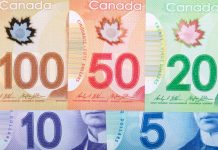- S&P 500 enters corrections territory as sanctions on Russia mount
- But nerves later steady as market impact seen limited, oil and gold slip
- Kiwi jumps on hawkish RBNZ, aussie outperforms too as dollar stays soft
Markets wary but less worried about Ukraine conflict
The market mood steadied on Wednesday, having wavered on Tuesday as the Ukraine crisis unfolded, with the United States and its allies slapping sanctions on Russia for ordering troops into Ukraine’s separatist regions.
Washington has made it more difficult for the Russian government to issue new debt as it welcomed Germany’s decision to suspend the certification of the Nord Stream 2 gas pipeline project. However, the measures taken by other countries were less punitive as they mostly involved a ban on Russian individuals and entities.
Although these are likely to be just the first of several waves of sanctions that the West will impose on Moscow should Russian forces enter the Ukrainian government-controlled territory, there was some relief that a tougher response was saved for future escalation.
As far as President Biden is concerned, there is no doubt that an invasion has started, and even though the proposed summit with his Russian counterpart Vladimir Putin has been called off, investors have not completely given up on a diplomatic solution. Either that or they think the US and Europe will back off from opting for sanctions that could inflict substantial pain on their own economies.
Stocks rebound as investors reassess Ukraine risks
The notion that even if a war in Ukraine is inevitable the broader economic fallout might not be so devastating after all might slowly be creeping into the markets, thus lifting sentiment slightly today. US stock futures are edging higher following another awful trading day on Wall Street on Tuesday.
The S&P 500 fell into correction territory for the first time in two years after slumping to one-month lows, while the Nasdaq Composite and Dow Jones both logged losses of more than 1%.
But global equity markets are backing the turnaround in risk appetite today, with Asian stocks closing mostly higher and European shares getting off to a solid start.
Oil rally pauses for breath, gold tests $1,890
The somewhat more positive tone weighed on save havens such as gold, the Japanese yen and Swiss franc. The precious metal eased to around the $1,890/oz level and oil prices were lower too.
Brent crude futures stepped back from the brink of hitting $100 a barrel on Tuesday, settling near the $96 handle today. WTI futures were last quoted at $91.39 a barrel.
Apart from ebbing fears about Russian energy exports getting caught in the Ukraine crossfire, the possibility that Iranian supply could soon enter the oil market is also weighing on prices as negotiators are reportedly inching closer to renewing the Iran nuclear agreement.
Nevertheless, the pullback in oil is negligible as demand is expected to continue to outstrip supply over the coming months.
Dollar stuck in a tight range
The US dollar remained on the backfoot as the combined easing in risk aversion and doubts about how hawkish the Fed will be kept the currency’s index against a basket of rivals confined within a narrow trading range.
Fed policymakers have in recent days appeared undecided about the need for a big rate hike in March. Though, the fact that it’s not being ruled out and the data generally supports it, means some traders may be underestimating the risk of a 50-basis point move.
On today’s Fed roster are the San Francisco Fed’s Daly and Governor Waller.
Kiwi shines after RBNZ’s hawkish surprise, pound lags
Stealing the FX limelight on Wednesday were the commodity-linked currencies. The aussie gained 0.6% despite only a modest pick up in wage growth in Australia in Q4. The loonie was up about 0.5% but the New Zealand dollar surged by 1% following the RBNZ’s decision to raise interest rates for a third straight meeting earlier today.
The RBNZ’s announcement was already fully baked in by the markets but the minutes revealed that it was a close call between 25 and 50 basis points. Moreover, policymakers now expect the official cash rate to reach 3.35% as opposed to the previous projection of 2.6%.
The sharply more hawkish tone caught investors off-guard, propelling the kiwi to just under the $0.68 mark.
The euro also benefited from the improvement in risk sentiment, climbing above $1.1355, but sterling lagged its peers somewhat as it struggled to reclaim the $1.36 level.
As the RBNZ ponders a 50-bps hike, the Bank of England seems to be backing away from an immediate aggressive move. Speaking before lawmakers today, BoE Governor Andrew Bailey pointed to the risk of second-round effects from high inflation but gave no clear indication that a shift to increments of larger than 25 bps was on the cards soon.














